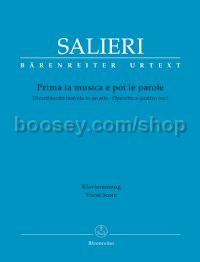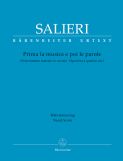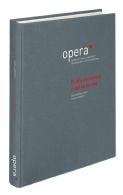Prima la musica e poi le parole (vocal score, new edition)
Prima la musica e poi le parole (vocal score, new edition)
Special Offer
* Estimated price converted from UK retail price
A memorable musical competition commissioned by the emperor Joseph II took place on 7 February 1786 as part of a festival in the orangery of the Schönbrunn palace. A German Singspiel ensemble performed Mozart’s Schauspieldirektor whilst Antonio Salieri’s “Prima la musica e poi le parole” was performed by the Italian court singers and musicians. This charming opera satire belongs to the genre of “metamelodramma” in which the opera itself becomes the subject of the action. The people who are part of an opera production, for example the librettist, composer and prima donna, appear as characters on the stage and are presented in a humorous self-reflection. In this ‘theatre about theatre’ Salieri parodies the music from Giuseppe Sarti’s “Giulio Sabino” in his insert arias, thus playing on the music which was totally familiar with the audience of the time. By reflecting on the musical-dramatic style of that period and discussing whether ‘the word’ or ‘the music’ should take priority, this masterpiece is considered to be an early forerunner to Richard Strauss’s Capriccio.
The new edition of the score is published as part of “opera – Spectrum of European Music Theatre in Separate Editions”. There are several alterations regarding the libretto text, stage directions, articulation, ornamentation, etc. which have been incorporated into this newly engraved vocal score. Furthermore, all appendix numbers from the score which concern the quotations from Giuseppe Sarti’s “Giulio Sabino” have also been incorporated.
• Urtext vocal score based on the historical-critical hybrid score published as part of “opera – Spectrum of European Music Theatre in Separate Editions” edited by Thomas Betzwieser (music edition) and Adrian La Salvia (text edition).
• Original Italian libretto with singable German translation
• Comprehensive bilingual foreword (Ger/Eng) on the genesis and reception of the work, on metamelodramma and intertextuality etc.
• Includes an extensive appendix to the quotations taken from Giuseppe Sarti’s “Giulio Sabino”
• Idiomatic piano reduction







